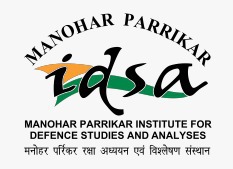The Centre focuses on issues that challenge India’s internal security. Secessionist movements based on ethnic identities in the Northeast and Jammu & Kashmir have been contesting the Indian state through violent means for decades. The Left Wing Extremism movement based on Marxist-Leninist ideology is engaged in a struggle to overthrow the democratic structure of the Indian state. Intermittent terrorist attacks perpetrated by foreign and home grown terrorist groups have been disrupting peace and political order in the country. Infiltration, illegal migration, and trafficking of arms and narcotics are not only breaching the country’s international borders but are also aggravating its security situation. The research efforts of the Centre are focused on analysing the trends, patterns, causes, and implications of these threats and challenges, and suggesting policy alternatives. The Centre’s research agenda includes: left wing extremism, insurgencies in the Northeast India, cross border terrorism and militancy in Jammu and Kashmir, global and national trends in terrorism, management of India’s international borders and security of its coasts.
The Centre also undertakes various projects entrusted by the Ministry of Home Affairs and the National Security Council Secretariat on matters internal security. The Centre has a mix of civilian scholars and officers deputed from the armed forces and central armed police forces.
The Centre has a bilateral agreement to collaborate with the Border Security Forces’ Institute for Border Management and Strategic Studies.
The only way forward for India, therefore, is to decouple the Kashmir issue from that of Pakistan, and address the internal aspects: Kashmir's development, unsettled political issues, healing the wounds and alienation of the youth, promptly.
This monograph examines the Indian government’s perspective on the issue of infiltration/illegal from Bangladesh. It analyses the socio-economic and political impact of the presence of a large number of illegal Bangladeshi migrants on the receiving societies within India.
This monograph is an attempt to examine American and Indian counterinsurgency experiences through the lens of historical context, organizational culture, and military capability.
Bringing about change in any setup, especially major shifts, is a challenges. This challenges is accentuated further in a strictly hierarchical organisation like the army, presenting an unenviable contradiction to both senior military practitioner and the governing elite, wherein, change is inevitable, yet, it is most likely to be resisted.
Under the US leadership, the international community has been fighting the war on global terrorism for the past decade and a half. Strategies and targets have undergone several changes in this war, but terrorism continues to show no signs of decline. It continues to pose a major security challenge to world order and stability. Concrete and chilling evidence for this was provided by the recent attacks in Paris, Egypt, Indonesia, Nigeria, Kunduz, Kabul, Peshawar and Pathankot. The list is indeed long and extensive to be fully recorded here. During the first 15 days of 2016, one website records 17 terrorist attacks in different parts of the world.
E-Copy available
Terrorism finance has aptly been termed as the lifeblood of terrorism. Yet, this remains one of the most under researched facets of terrorism. This limitation is even more apparent in the Indian context, despite the fact that the country has faced the scrouge of terrorism and insurgency for over five decades. Lifeblood of Terrorism: Countering Terrorism Finance, is the first book on the subject in an Indian context.
In the larger national strategic discourse, identifying and prioritising the internal security issues and challenges is very crucial. India has been grappling with multiple ‘identity-centric’ and ‘grievance-driven’ challenges that have impacted its security and national fabric for more than seven decades now. While there is no gainsaying that the country has been largely successful in managing these conflicts well below the threshold levels, a durable peace—a prerequisite for national security and development—is as elusive as ever in most of these conflicts.
The political dispute over the territory of Kashmir is an intricate problem confronting the modern South Asian leadership. The intricacies of the conflict have led to voluminous writings on the region and evident from them is a greater focus on Jammu and Kashmir (J&K) as compared to the Pakistan-occupied Kashmir (PoK). The ‘escape’ of Pakistan–occupied Kashmir from the scholarly radar has begun to change only recently.
The Border Area Development Programme was initiated in the year 1986–87, to strengthen India’s security by ensuring developed and secure borders. Initially, the programme was implemented in the western border states to facilitate deployment of the Border Security Force. Later, the geographical and functional scope of the programme was widened to include eastern and northern sectors of India’s borders and as well as socio-economic aspects such as education, health, agriculture and other allied sectors. But, it is difficult to say that the implementation has been uniform in all the sectors.
Northeast India continues to be an industrially underdeveloped and infrastructurally deficient region. The poor condition of infrastructure in the region demands serious attention. Studies in the region reveal that a people’s perspective of development, i.e., roads, electricity, telecommunications and water, falls rightly within the ambit of critical infrastructure. Critical infrastructure is directly linked to economic development, national security, access and availability of educational and health infrastructure.
Ladakh is one of the largest administrative units in India, in terms of its territory. Due to its contiguity with Xinjiang and Tibet and its close proximity to Central Asia, and enjoying a central position in the network of overland caravan routes that were linked to the Silk Route, Ladakh acted as an important gateway in the Indo-Central Asian exchange of men, materials and ideas through the ages.
The debate over what constitutes terrorism spans a wide, diverse and largely a competing body of intellectual strands. In particular, the lack of consensus on the need (or otherwise) for a universally acceptable definition or no definition at all characterizes the discursive dynamics of the definitional subfield. Conversely, there is a persistent tendency of circumspection to embrace methodologies, e.g. case study frameworks, that can prove to be more helpful in conceptualizing terrorism.
This article is a moderate attempt to understand the various ideas associated with ethnicity and ethnic conflicts, and to study the nature, trends and typology of ethnic and insurgent conflicts in the North East Indian states (viz. Arunachal Pradesh, Assam, Meghalaya, Mizoram, Manipur, Nagaland and Tripura) from 1990 to 2016, using the UCDP/PRIO Armed Conflict Dataset.
Human security as a concept contends that the appropriate referent for peace and security should be the individual instead of the state. This Essay explores whether a human security-centred approach, i.e., a focus on the individual citizen’s concerns and security complements rather than contradicts state and national security.
Power trading across borders is not a new concept, even in the subcontinent. However, it has been sporadic and unstructured and often not in strict consonance with the requirements of national security. This article seeks to make out a case for using energy security and cross border power trade, as one of the ‘soft power’ tools to further our national security.
This occasional paper attempts to assess and analyse the impact of the MPF scheme on building police combat capability in affected States.
The language issue has the potential to explode into ethnic conflicts and as a result it requires critical analysis and farsighted action from the government and the linguistic groups in question.
Border trade is trade in local products of limited value by the people residing within a few kilometres on either side of the international border. Although the contribution of border trade in India's economy is negligible, it has substantial impact on its relations with its neighbours as well as on the people living on the border.



